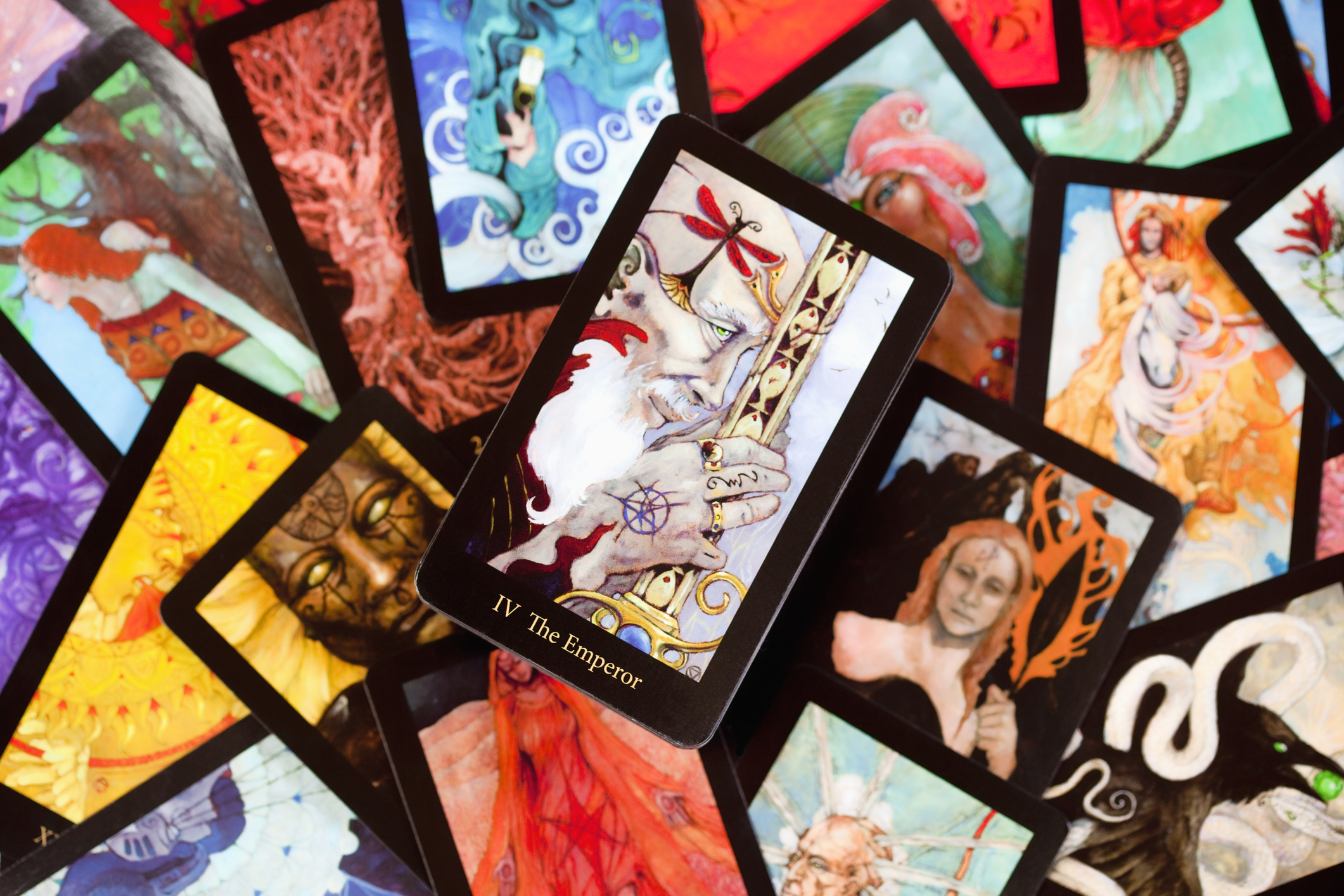Tarot: City Life & the Fortune-Teller In Eighteenth-Century Europe by Vincent Pitisci
The earliest records of tarot card reading come from eighteenth-century Europe. By understanding the common people of that era and the kind of work available at that time, we can get a better picture of the typical fortune-teller of that period as well. Shopkeepers and artisans were at the upper end of income and comfort. These included upholsterers, coach painters, joiners, and watch finishers, to name a few. But the jobs and lives of those at the lower end of the working class were deplorable at best. Some occupations are now forgotten or have barely been recorded at all. One example is a “pure-finder,” old women who walked the streets collecting dog waste which they then sold to tanneries for a few pence a bucket. If you think you’ve got it rough, think again!
Occupational diseases abound in the eighteenth century. Sawyers became blind at an early age, exposed to so much sawdust that it literally damaged their eyes. Metal founders died from lead poisoning. Glassblowers’ lungs collapsed from silicosis. Hairdressers were susceptible to lung disease from breathing the mineral powder needed to whiten wigs. Hatters went mad from using mercury nitrate to finish fine felt hats. Tailors became blind from eyestrain. Tailors of the military were at the highest risk, for the red thread used for the red coats of the English uniforms was the hardest to see in the poor lighting conditions of the times.
Prostitution and crime was high. The helpless begged, and thieves stole what they could. One could be hung for simply poaching a rabbit, and the gallows were always full. Some of the slang terms for those hung for a crime were to dance upon nothing, the morning drop, to take a leap in the dark, to loll your tongue out at the company, or, because of the strangling sounds a person makes while hanging, to cry cockles.
The Industrial Revolution, which began in Great Britain around 1760, turned a blind eye to young labor. Orphaned children were forced to work in unhealthy, cruel conditions and endure physical, mental, and emotional abuse for long hours without rest. Some little ones would continue moving their hands in their sleep as if they were still working on the job.
The Industrial Revolution was also the time of the card reader. If you were fortunate enough to own a deck of Tarot cards, you could mystify people with their magical images and your words of hope and destiny. I imagine older women were the main card readers of the time. Maybe a pure-finder by day and a card reader by night!
If I had been a card reader in those days, I would’ve wanted to protect myself and my cards with an air of mystical powers. I would want to appear to be able to curse those who threatened to take what little money I had or, worse yet, to rob me of my cards. I would also have wanted to give the impression that only I could tap the power of my cards, thus assuring that no one would try to take them from me. Yes, if I had been a card reader in the eighteenth century, I would’ve wanted to appear as if I had magical powers that could read your mind and curse your very soul if I chose to. In times like those, what other protection would a card reader have?
The Power of a Picture
Sometimes I think we take the images of the Tarot too seriously. And the large variety of imagery appearing on the different Tarot decks available today makes it quite challenging to find consistency. This can lead us to want to restrict ourselves to using one particular style of deck, such as the THOTH or the RIDER WAITE. Both are classic Tarot decks with wonderful imagery, but they are quite different from each other in the style of the images and the meanings they assign to each card. Which is right? Which is wrong? Actually, both are very good decks, and both can see into a question deeply. And there are hundreds of other wonderful Tarot decks that can do so just as well. One is not better than the other. They all work.
The classic symbolism shown in the cards can bring about some insight, and take on a broader, yet less direct, meaning to our everyday questions and concerns. Thus, I feel it best to look for meaning in the imagery in ways that can be directed specifically to one’s question.
Let’s ask the cards a question to see how much we can find with just one card’s imagery.
The Tarot cards can be read in many ways—by relying on definitions, by word associations, or by the rich images themselves. In the example below, we are using just the image of the card itself, without resorting to classic meanings to find answers.
Question:
“Should I open a restaurant? And if so, what type and where?”
We will use one tarot card to see what ideas it can tell us. After shuffling, the card we draw is the Hermit, #9 of the Major Arcana.
You might wonder how the Hermit card can help with this question. The trick is, we have to give him a chance. The Hermit holds a lantern like a beacon. It reminds me of the neon marquee sign of a 24-hour diner off an expressway. The Hermit is wearing heavy garments. Is it cold where he is? Could the diner be in the colder, northern part of the country—Minnesota, upper Wisconsin or Michigan? The Hermit holds a wooden staff, which could also be a hint as to the diner’s location. Maybe it is near a national forest, a lumberyard, or somewhere else involving wood.
Answer Found:
The Hermit tells me to look for a 24-hour diner with a big marquee sign for sale off a major expressway near a paper mill in the colder states of perhaps Minnesota, Wisconsin or Michigan.
Vincent Pitisci is the author of Genius of the Tarot: A Guide to Divination with the Tarot and The Essential Tarot: Unlocking the Mystery (both available in paperback through Amazon). His contact information and services can be found at www.pitisci.com. Pitisci lives and maintains a private practice in Chicago’s southwest suburb of Berwyn, Ill.
 Conscious Community Magazine Dedicated to Elevating Consciousness
Conscious Community Magazine Dedicated to Elevating Consciousness




